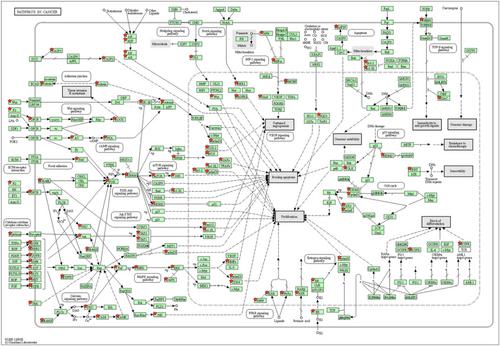Ultra-high-performance liquid chromatography-quadrupole time-of-flight-mass spectrometry-characterized extract of Aerides odorata Lour alleviates paracetamol-induced hepatotoxicity in animal model evidenced by biochemical, molecular, and computational studies
Abstract
Background
Many kinds of orchids have significant health benefits although adequate research on their biological functions is yet to be carried out. This study investigated the paracetamol-induced liver damage–protecting effect of epiphytic Aerides odorata methanol extract (AODE).
Methods
The protective effects of AODE were studied by analyzing its effect on liver function parameters, messenger RNA (mRNA) expression, and tissue histopathological architecture. The results were confirmed by ligand–receptor interaction of molecular docking and multitarget interaction of network pharmacological analyses.
Results
AODE significantly (p < 0.05) minimized the dose-dependent increase in acid phosphatase, aspartate aminotransferase, alanine aminotransferase, alkaline phosphatase, γ-glutamyl transferase, lactate dehydrogenase, and total bilirubin compared to the reference drug silymarin. Malondialdehyde level decreased, and the antioxidant genes catalase (CAT), superoxide dismutase (SOD), β-actin, paraoxonase-1 (PON1), and phosphofructokinase-1 (PFK-1) were upregulated in AODE-treated paracetamol-intoxicated rats. A total of 376 compounds comprising phenols and flavonoids were identified using ultra-high-performance liquid chromatography-quadrupole time-of-flight-mass spectrometry (UPLC-qTOF-MS). The online toxicity assessment using SwissADME and admetSAR exhibited drug-like, nontoxic, and potential pharmacological properties. Additionally, in silico analysis showed that isoacteoside, one of the identified compounds, exhibited the best docking score (−11.42) with the liver protein human pituitary adenylate cyclase-1 (Protein Data Bank ID: 3N94). Furthermore, network pharmacology analysis identified the top 10 hub genes, namely AKT1 (protein kinase B), CTNNB1 (catenin beta-1), SRC (proto-oncogene c-Src), TNF (tumor necrosis factor), EGFR (epidermal growth factor receptor), HSP90AA1 (heat shock protein 90α), MAPK3 (mitogen-activated protein kinase 3), STAT3 (signal transducer and activator of transcription 3), CASP3 (caspase protein), and ESR1 (estrogen receptor 1), which are responsible for hepatoprotective activity.
Conclusion
The findings demonstrate that AODE could be a novel hepatoprotective target in drug-induced liver damage with a further single compound–based animal study.


 求助内容:
求助内容: 应助结果提醒方式:
应助结果提醒方式:


